Abstract
Objectives
To document that Gelfoam®(Pharmacia & Upjohn, Kalamazoo, MI) contributes to granuloma formation and spinal cord irritation by immune response.
Summary of Literature Review
The Gelfoam® or microfibrillar collagen applied during various operation for hemostasis. Some complications of Gelfoam®, such as mechanical cord compression, postoperative swelling and mass effect in closed cavity have been reported.
Materials and Methods
The patient was underwent posterior decompression and instrumented posterolateral fusion under the diagnosis of the ossification of ligamentum flavum at T10-11 and T11-12. In operation, Gelfoam® was used at epidural space. She complained of sensory deterioration and muscle weakness around lower extremities after 10days postoperatively. A second operation was performed.
REFERENCES
1. Harris WH, Crothers OD, Moyen BJ. Topical hemostatic agents for bone bleeding in humans. A quantitative comparison of gelatin paste, gelatin sponge plus bovine thrombin, and microfibrillar collagen. J Bone Joint Surg Am. 1978; 60:454–6.

2. Tomizawa Y. Clinical benefits and risk analysis of topical hemostats: a review. J Artif Organs. 2005; 8:137–42.

3. Friedman J, Whitecloud TS. Lumbar cauda equina syndrome associated with the use of Gelfoam: case report. Spine (Phila Pa 1976). 2001; 26:E485–7.
4. Herndon JH, Grillo HE, Roseborough EJ, Rich JC. Compression of the brain and spinal cord following use of Gelfoam. Arch Surg. 1972; 104:107.

5. Epstein NE, Silvergleid RS, Hollingsworth R. Increased postoperative cervical myelopathy and cord compression resulting from the use of Gelfoam. Spine J. 2009; 9:E19–21.

Fig 1.
Magnetic resonance imaging showing epidural tumor compressing thoracic spinal cord. (A) T-2 weighted saggital images showing OLF compressing thoracic spinal cord. (B) T-2 weighted axial images showing OLF compressing thoracic spinal cord.
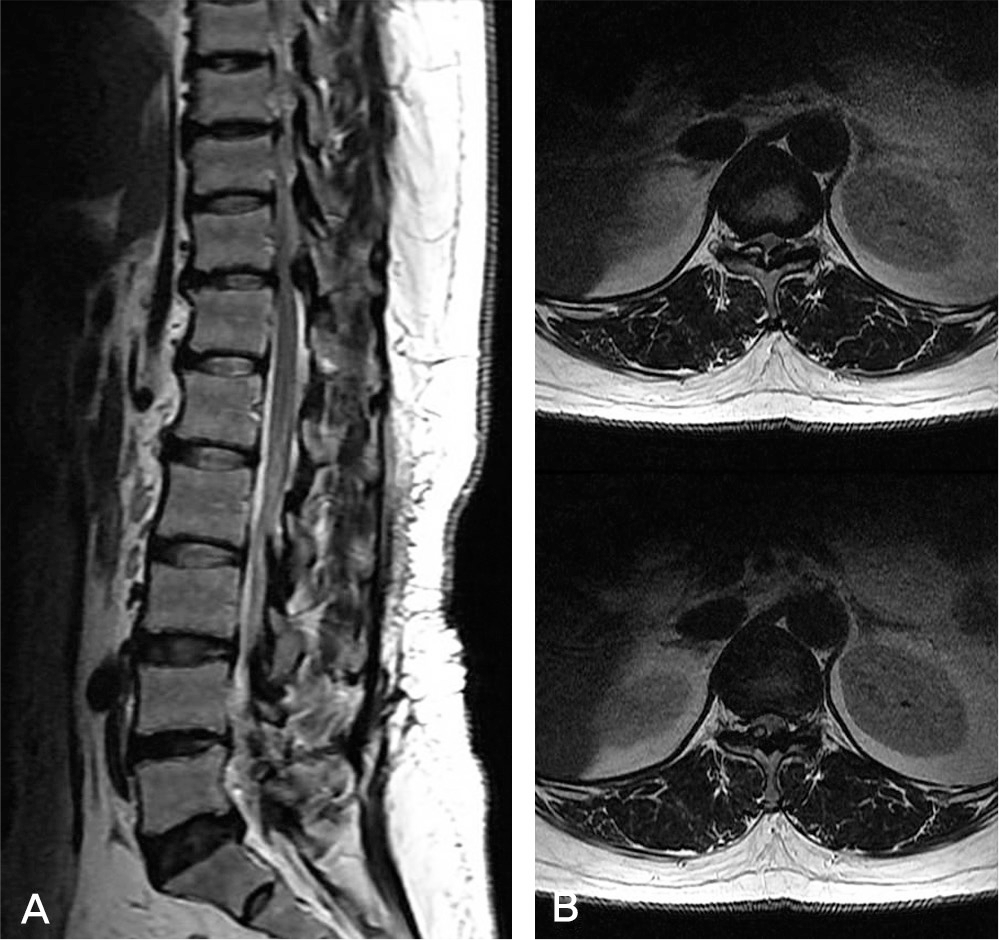
Fig 2.
Immediate postoperative x-rays after posterior decompression and instrumented posterolateral fusion. (A) AP view. (B) Lateral view.
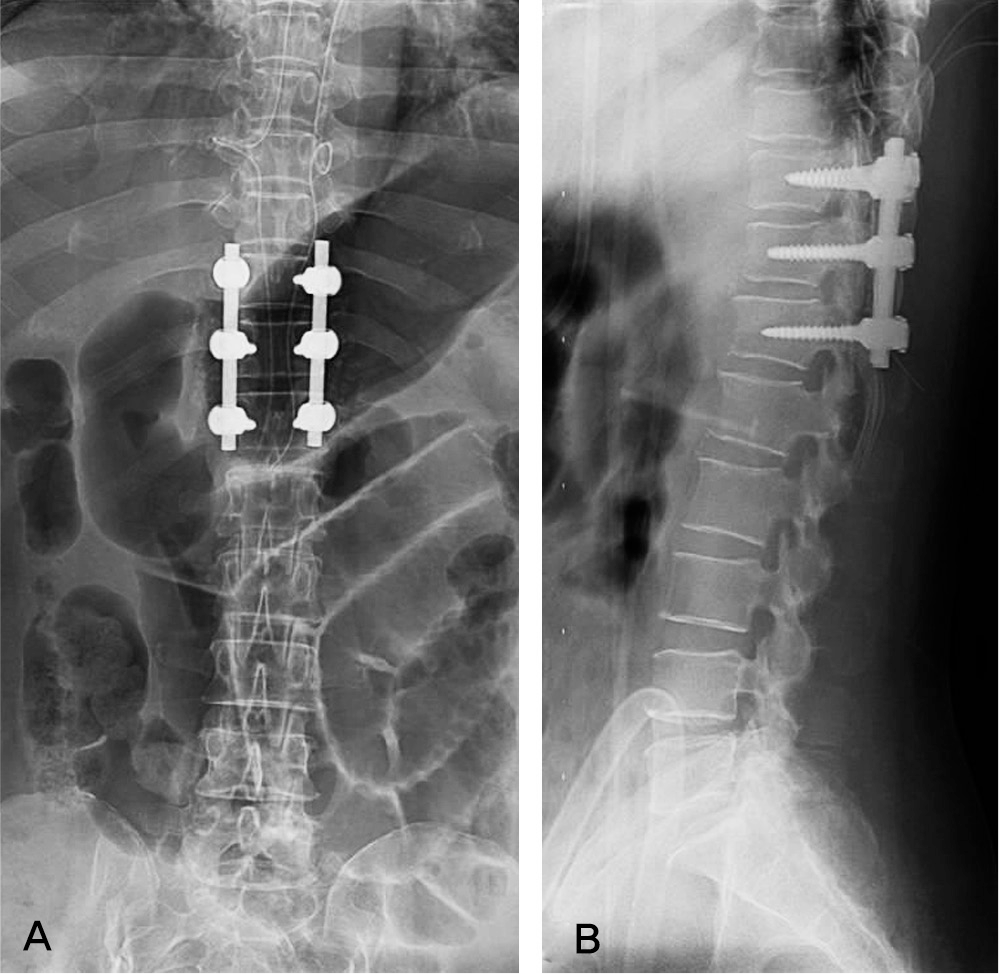
Fig 3.
Magnetic resonance imaging showing epidural Gelfoam® mildly compressing thoracic spinal cord. (A) T-2 weighted saggital and axial images showing Gelfoam® on the thoracic spinal cord. (B) T-1 weighted saggital and axial images showing Gelfoam mildly compressing thoracic spinal cord.
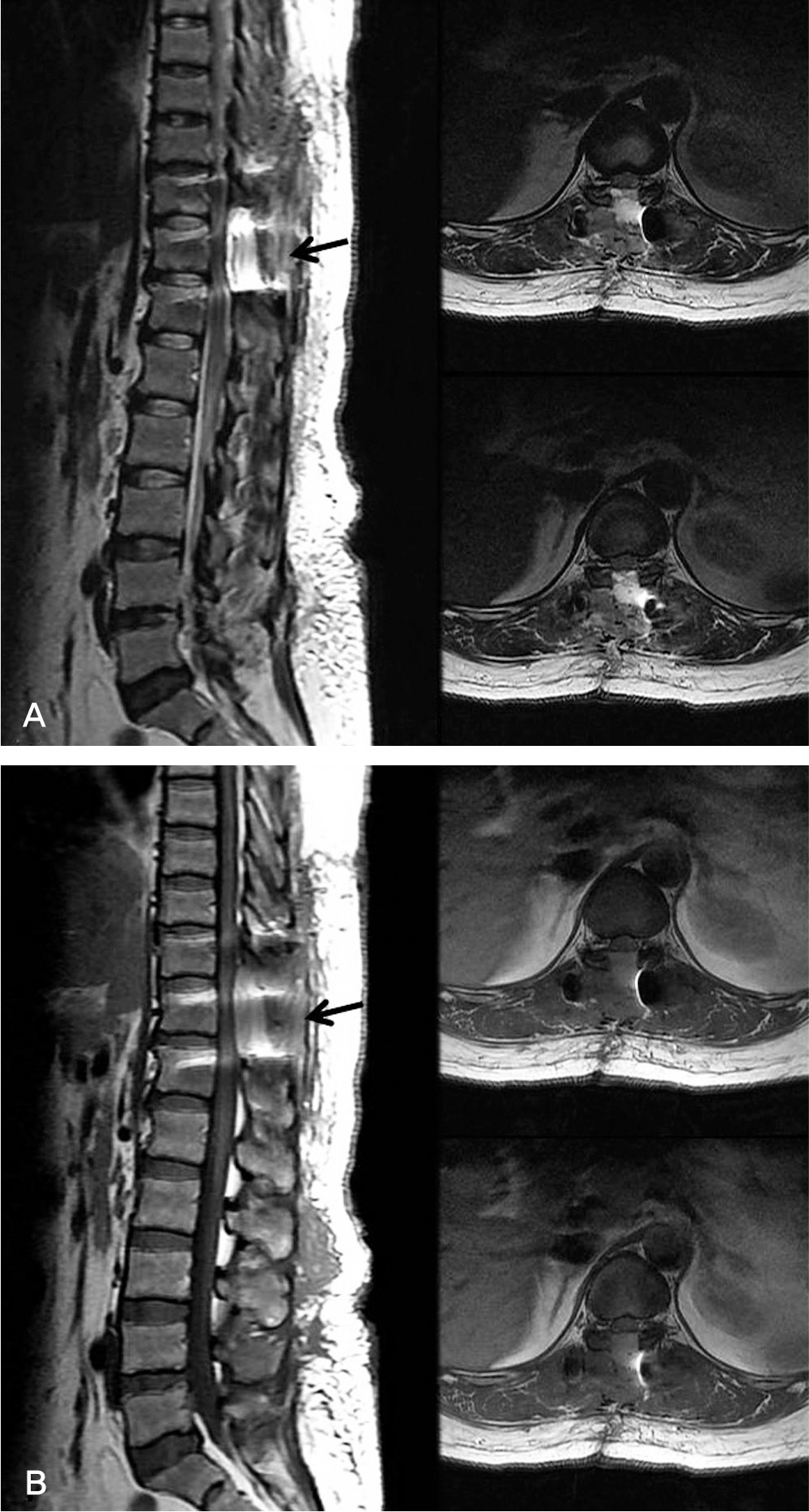




 PDF
PDF ePub
ePub Citation
Citation Print
Print


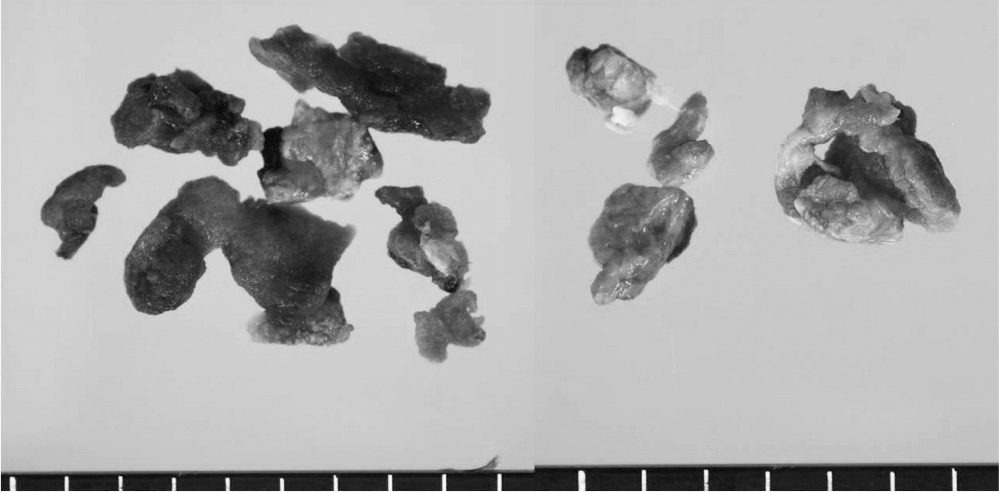
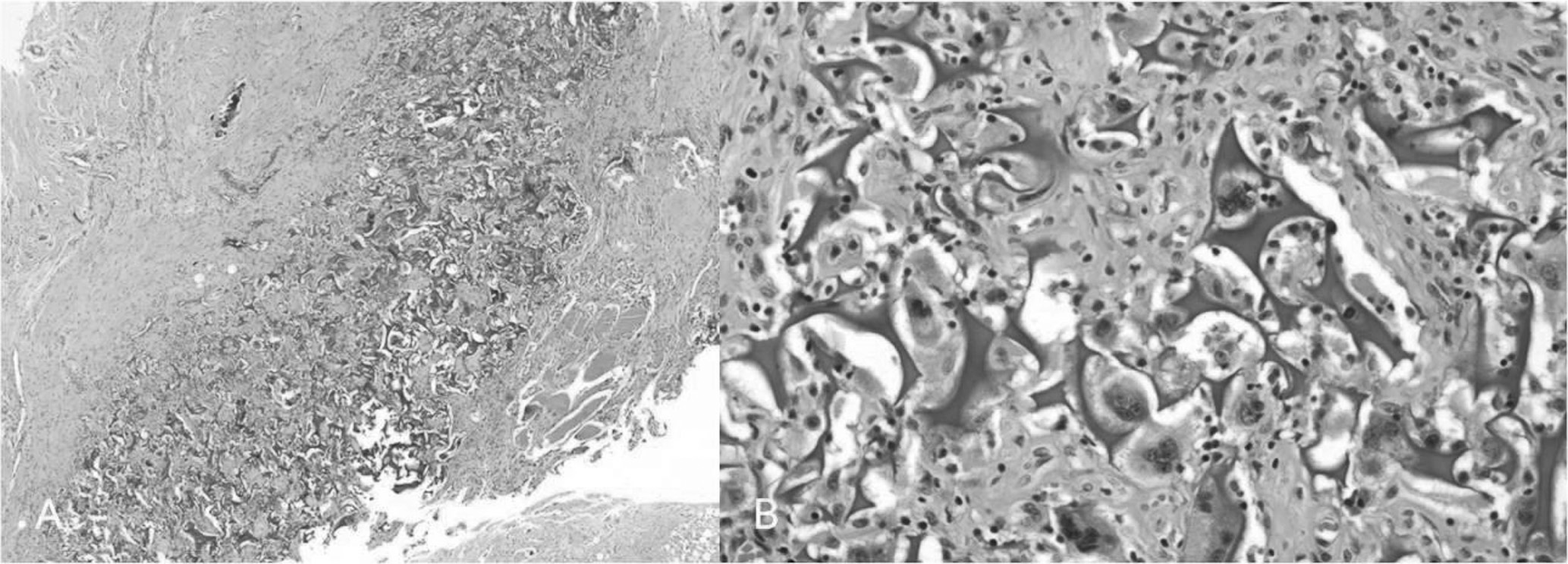
 XML Download
XML Download